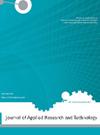利用废生物质热解油研究柴油机特性:压缩比影响的研究
Q3 Engineering
Journal of Applied Research and Technology
Pub Date : 2022-07-01
DOI:10.22201/icat.24486736e.2022.20.3.1723
引用次数: 0
摘要
这项工作的重点是研究压缩比(CR)对燃用柴油(80%)和热解油(20%)混合物的柴油发动机运行特性的影响,该混合物来源于标准条件下的Bael脱油滤饼。发动机在三个CR下运行,即18:1(较高)、17.5:1(标准)和16:1(较低)。对于满负荷混合燃料运行,随着CR从17.5增加到18,制动热效率(BTE)提高了5%,制动比能耗(BSEC)降低了3%。在高CR下,与峰值负荷下的柴油相比,混合燃料的一氧化碳(CO)和未燃碳氢化合物(HC)分别降低了58.3%和38.5%。混合燃料在峰值负荷和CR为18:1时的氮氧化物排放量(NOx)增加了25.7%。试验结果表明,发动机在CR 18:1时可以达到最佳性能。本文章由计算机程序翻译,如有差异,请以英文原文为准。
Investigations on diesel engine characteristics using waste biomass Pyrolysis oil: A study on the effect of compression ratio
This work is focussed at studying the compression ratio (CR) effect on the operating characteristics of a diesel engine fuelled with diesel (80%) and pyrolytic oil (20%) blend, derived from Bael de oiled cake at standard conditions. Engine was operated at three CR’s namely 18:1 (higher), 17.5:1 (standard) and 16:1 (lower). For the blended fuel operation at full load, the brake thermal efficiency (BTE) improved by 5% and brake specific energy consumption (BSEC) diminished by 3% as the CR increased from 17.5 to 18. At high CR, the carbon monoxide (CO) and unburnt hydrocarbon (HC) were lowered by 58.3% and 38.5% respectively for blended fuel when compared to diesel at peak load. The nitrogen oxides emission (NOx) increased by 25.7% for blended fuel at peak load and CR of 18:1. On the whole the experimental results suggest that optimum performance of the engine can be attained at CR 18:1.
求助全文
通过发布文献求助,成功后即可免费获取论文全文。
去求助
来源期刊

Journal of Applied Research and Technology
工程技术-工程:电子与电气
CiteScore
1.50
自引率
0.00%
发文量
0
审稿时长
6-12 weeks
期刊介绍:
The Journal of Applied Research and Technology (JART) is a bimonthly open access journal that publishes papers on innovative applications, development of new technologies and efficient solutions in engineering, computing and scientific research. JART publishes manuscripts describing original research, with significant results based on experimental, theoretical and numerical work.
The journal does not charge for submission, processing, publication of manuscripts or for color reproduction of photographs.
JART classifies research into the following main fields:
-Material Science:
Biomaterials, carbon, ceramics, composite, metals, polymers, thin films, functional materials and semiconductors.
-Computer Science:
Computer graphics and visualization, programming, human-computer interaction, neural networks, image processing and software engineering.
-Industrial Engineering:
Operations research, systems engineering, management science, complex systems and cybernetics applications and information technologies
-Electronic Engineering:
Solid-state physics, radio engineering, telecommunications, control systems, signal processing, power electronics, electronic devices and circuits and automation.
-Instrumentation engineering and science:
Measurement devices (pressure, temperature, flow, voltage, frequency etc.), precision engineering, medical devices, instrumentation for education (devices and software), sensor technology, mechatronics and robotics.
 求助内容:
求助内容: 应助结果提醒方式:
应助结果提醒方式:


